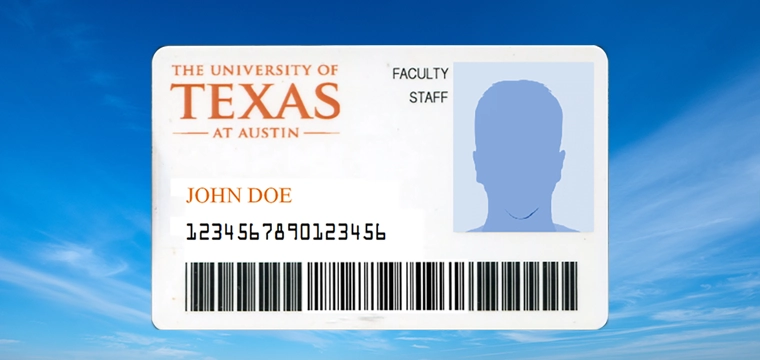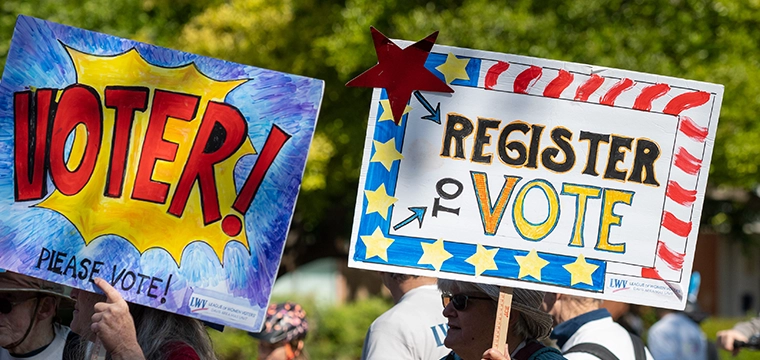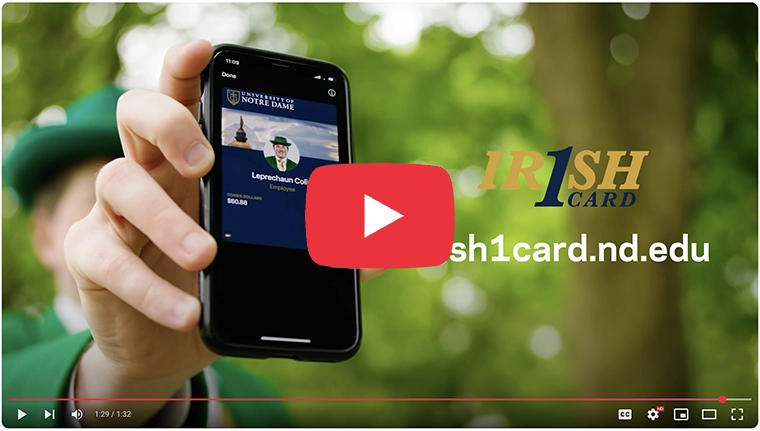Regardless of the type of card a university issues to its students, there remains one constant – students are going to punish them.
Whether it gets bent at the bottom of a bag or purse, hole punched beyond repair or accidentally thrown in the wash, student ID cards are put through the paces. But what can be done to prolong the life of a card, or better still, is there a way to entice students to take better care of their credential?
One possible answer comes in the form of the many card accessories – lanyards, card sleeves, rigid plastic holders, etc. – that students can use. It’s an oft-overlooked option in the campus card realm, but one that can make a difference in the life of a card.
Often a university will give students a lanyard and card holder of some sort at orientation, but many stop there when in terms of accessories. In other cases, the campus will make accessories available for purchase at the card office or bookstore.
“Universities position accessories for students by stressing that they can protect a student’s investment,” says Mark Degan, corporate marketing manager for ColorID. “The less time that the student has to spend coming back to get their card replaced the better, and it’s less money out of the student’s pocket.”
Accessories can be grouped into two categories: Collegiate Licensing Company (CLC) merchandise featuring NCAA logos and blank, or card program-specific accessories. “We can do both, but we prefer the non-CLC route when it comes to card accessories,” says Degan.
Depending on the card type and application, there are a number of options that students can utilize when it comes to ID accessories. But Degan stresses that accessories should always be a consideration.
“No matter what the card office does at the ID printer, no matter how many sheets of laminate they use, the student ID card could always use extra help,” says Degan. “As soon as students get their hands on their card, they’re going to use it for crazy things like ice scrapers or they’re going to put it through the laundry.”
It’s for this reason that he suggests card offices consider providing an all-encompassing layer of protection. “If you can contain a card in a rigid holder that would be the best possible scenario,” says Degan.
In addition the way cards are used, the size of the university and the card technology it uses can play a role in the accessories that a card office should consider. “Campuses should first consider the type of card they have and how they’re using the credential on campus,” he says.
“For campuses that don’t use contactless technology, have a logical access solution on campus, or just use mag stripe, you may not need protective accessories because you’re not subjecting the card to a lot of wear and tear,” says Degan. “The point of a card holder is to protect cards so they will last longer. But what’s the point of spending 50 cents on a cardholder for a card that only costs a dime to make?”
For more advanced cards, however, spending 50 cents to protect a card that costs $5 makes sense. “The best way to prolong the life of a card is to first laminate the card during the printing process, this way you give the card a good start before it even leaves the card office,” explains Degan. “After that I really like the rigid card holder, which is a polycarbonate piece of plastic that doesn’t flex, so when you slide your card in, it doesn’t bend or bow.”
ColorID also offers holders that have multiple bays, which enable students to hold driver licenses or payment cards as well. As Degan explains, the rigid holder is probably the best route for prolonging the life of a card, but it comes with a premium price.
“If you’re trying to keep costs down, we’d suggest a vinyl card holder, which can also hold multiple cards, but make sure you get the added anti-transfer material to ensure card imagery remains intact,” says Degan. “As opposed to the rigid plastic material that holds a card by its corners, the vinyl holder physically makes contact with the face of the card, hence the need for anti-transfer material.”
A student practice that has long plagued the ID card is hole punching. Countless freshmen have sat hunched over dorm room desks, whittling away at IDs with a paper hole punch.
As Degan stresses, this is a needless act that does more to compromise the integrity of the card than make it convenient for the student. “A lot of people will punch a hole through their card, and whether it’s a technology card or not, blank or preprinted, its not a solid sheet of plastic, we make it in layers – a core sheet, art sheet and laminate sheet,” he explains. “These layers are all compressed with heat and pressure, so the second you punch a hole in it you subject each layer to humidity and the elements.”
In cases where students are adamant about punching their card, it should be done with a card-specific hole puncher. These are different than your standard paper hole puncher, featuring a thicker gauge metal because plastic is a lot sturdier than paper.
“If they must punch their card, there are certain areas on the card that we will mark so that card offices and students know where they can punch the credential without damaging an antenna or microprocessor within the card,” says Degan. “The same holds true so that a student doesn’t punch a hole and remove part of an important hotline number or similar information printed on the card.”
To get around this ill-advised situation, universities should opt to offer students a card holder so the allure of hole punching can be avoided. Another option is the card clamp, otherwise known as “the gripper,” which latches onto the edge of a card and allows for easy access and swiping without the need for a card holder.
Once the student has selected a card holder that suits their needs, they need to decide how they want to carry it. Lanyards are the mainstay in this department, but as Degan explains, there’s no shortage of options.
“Retractable badge reels and strap clips are more popular amongst faculty and staff, as they don’t typically care about the aesthetics, but lanyards are typically the popular choice for students,” explains Degan.
For lanyards, the option to customize an order is one that many universities find attractive, provided the price is right. “Generally you can customize lanyard orders starting at a quantity of 100, though the price is a little higher,” explains Degan. “When you purchase over 1,000 units, the price for personalized lanyards will be trimmed down, with the next price break typically coming in at the 10,000 mark.”
As for the design of a lanyard itself, the process will depend on the complexity of the desired design. “We can personalize lanyards by silk screening, which lays a plastic-like ink on top of the lanyard material,” he says. “It’s a good inexpensive way to personalize lanyards with only one color printing.”
For the university looking for something more sophisticated and colorful, however, Degan suggests dye sublimation. “With this method we start with a white fabric and dye it to the desired colors,” he says.
“If you’re a school that has a lot of physical access, vending or laundry where the students have to take their card out a lot, you would want to put the card on a lanyard for easier access,” explains Degan. “Students generally enjoy lanyards, and whether they wear it around their neck or not, a long piece of fabric makes their card easier to find when it’s buried in their backpacks or purses.”
In the last year to 18 months, Degan explains that there has been an increased demand for badge holders that attach to a mobile device.
“Everyone has their cell phone on them theses days, so what better option than to combine a badge holder with a cell phone. The trick is that cellphone holders utilize 3M sticky film to attach the card holder to the phone itself.”
This can be tricky because, as Degan explains, the 3M adhesive doesn’t do a great job of sticking to custom silicone phone cases. It does, however work well if it’s on the back of a normal glass, metal or plastic backing like with the iPhone or Samsung Galaxy.
Elsewhere, Degan has seen a demand for RFID-blocking accessories in the university space, albeit in smaller quantities.
“These badge holders basically have a glorified piece of aluminum that blocks the RFID transmission from the card and protects it from people trying to sniff data from the card,” says Degan. “These are common in military and federal deployments, but they also apply to certain departments at a university, IT for example.”
Degan stresses that students don’t really need to worry about this type of attack, but what’s important is that the technology is available if it makes school officials and students feel more secure.
As the number of universities moving to more costly technology cards increases, so too does the need to safeguard these credentials and prolong their lifespan.
Thankfully, adding protective accessories to the student ID doesn’t have to come at the expense of convenience, utility or aesthetics. Moreover, accessories geared toward the mobile device and custom card accessories will provide universities with a means to further instill a sense of school spirit while protecting the students’ investment in their credential.




